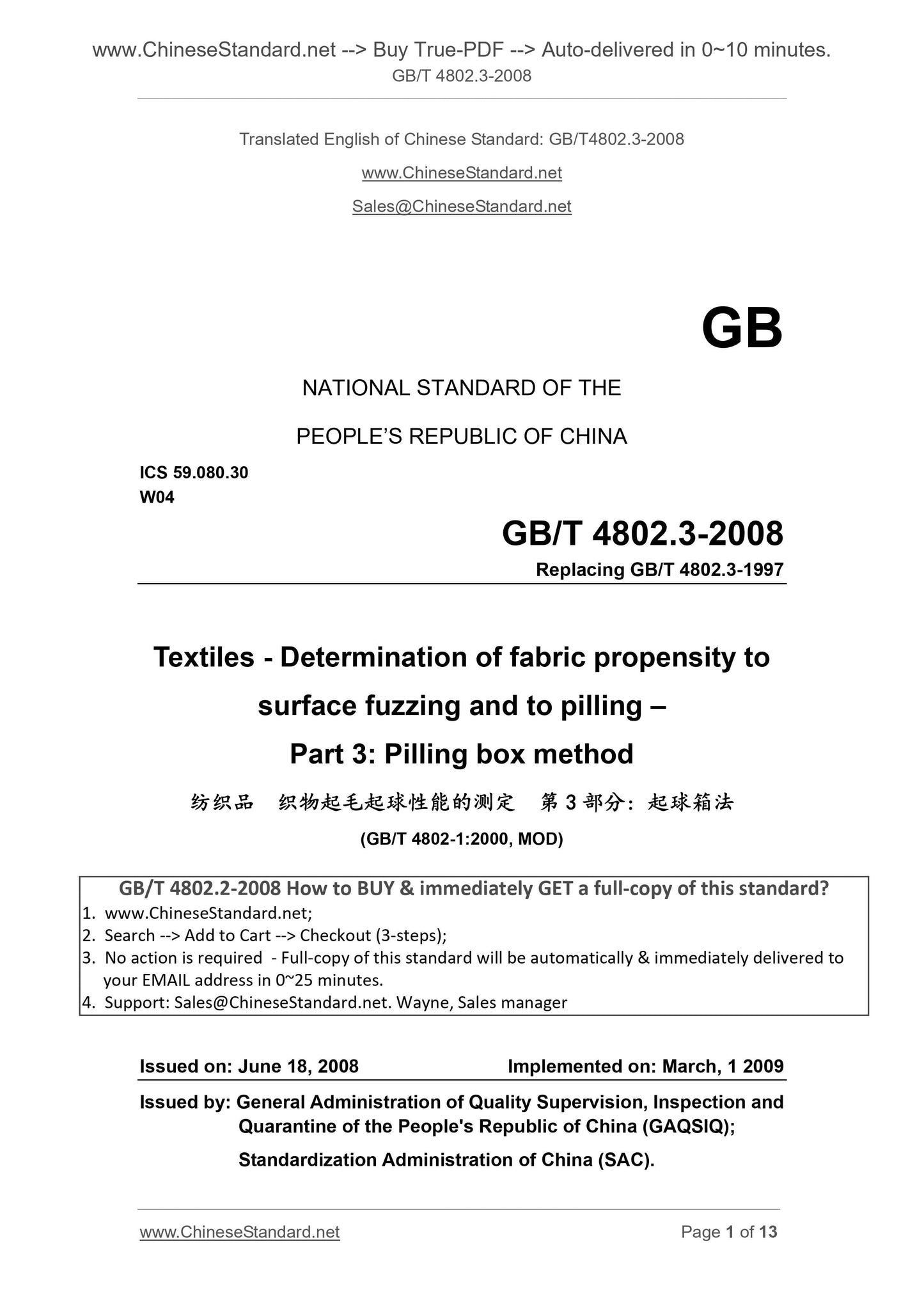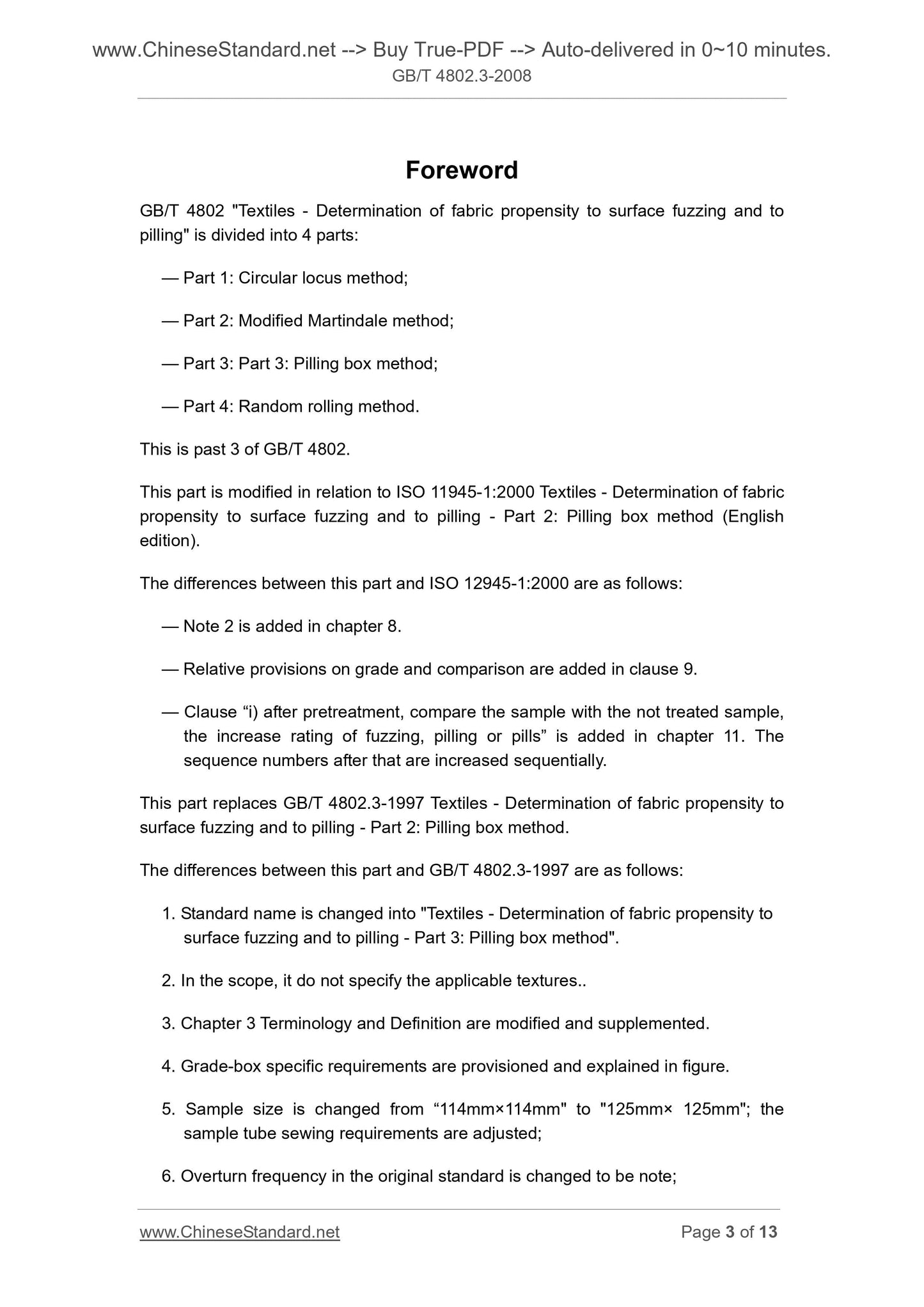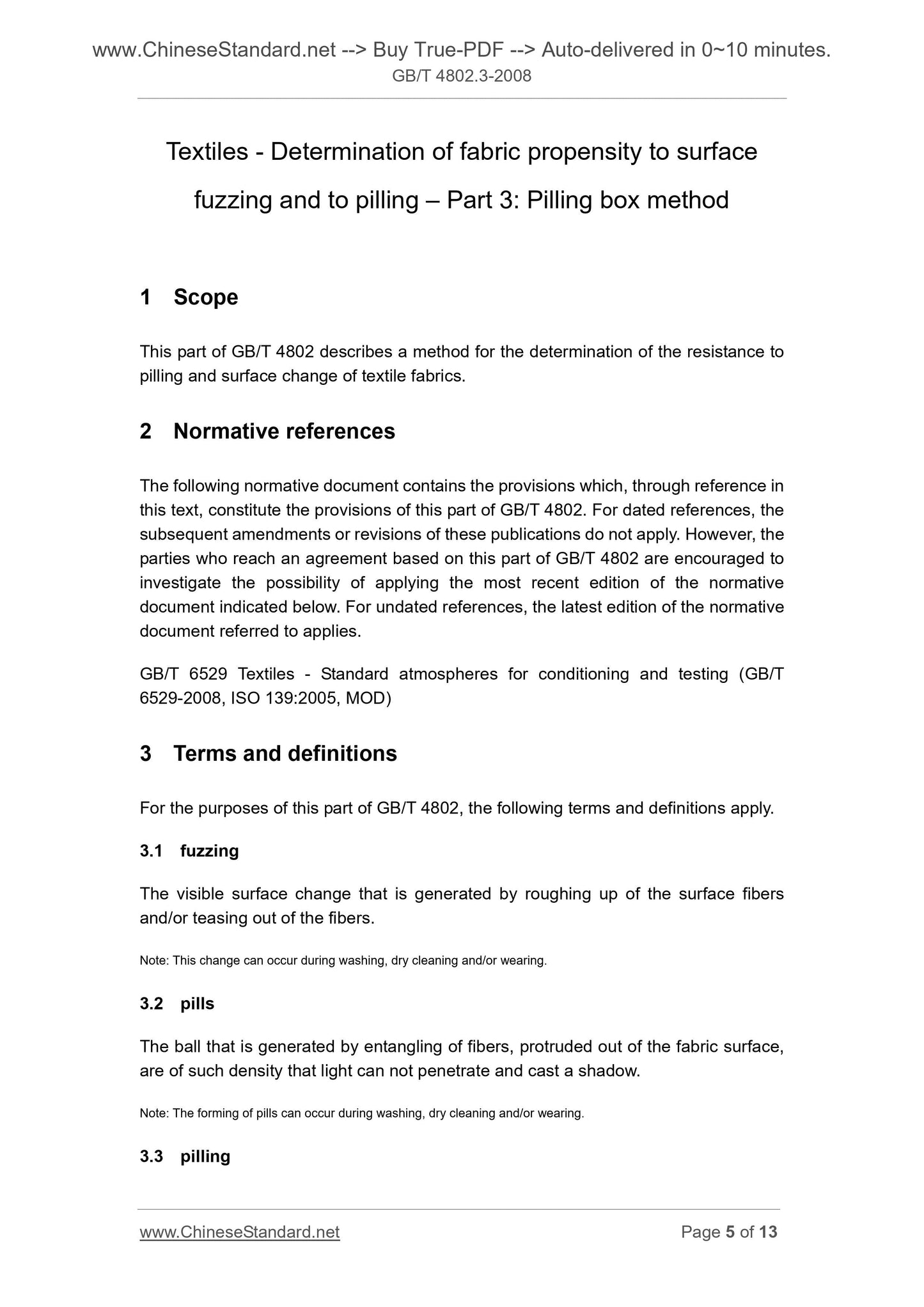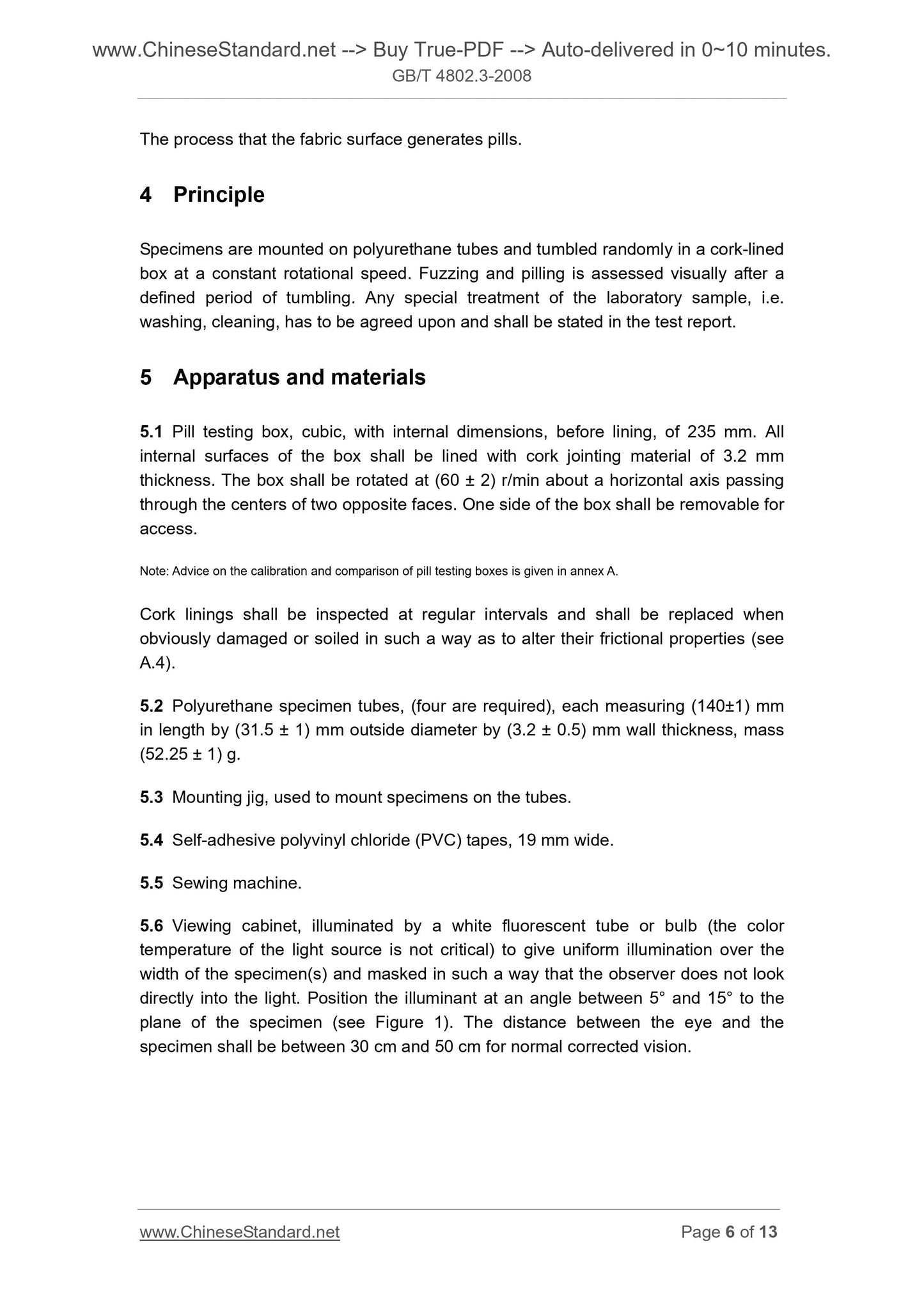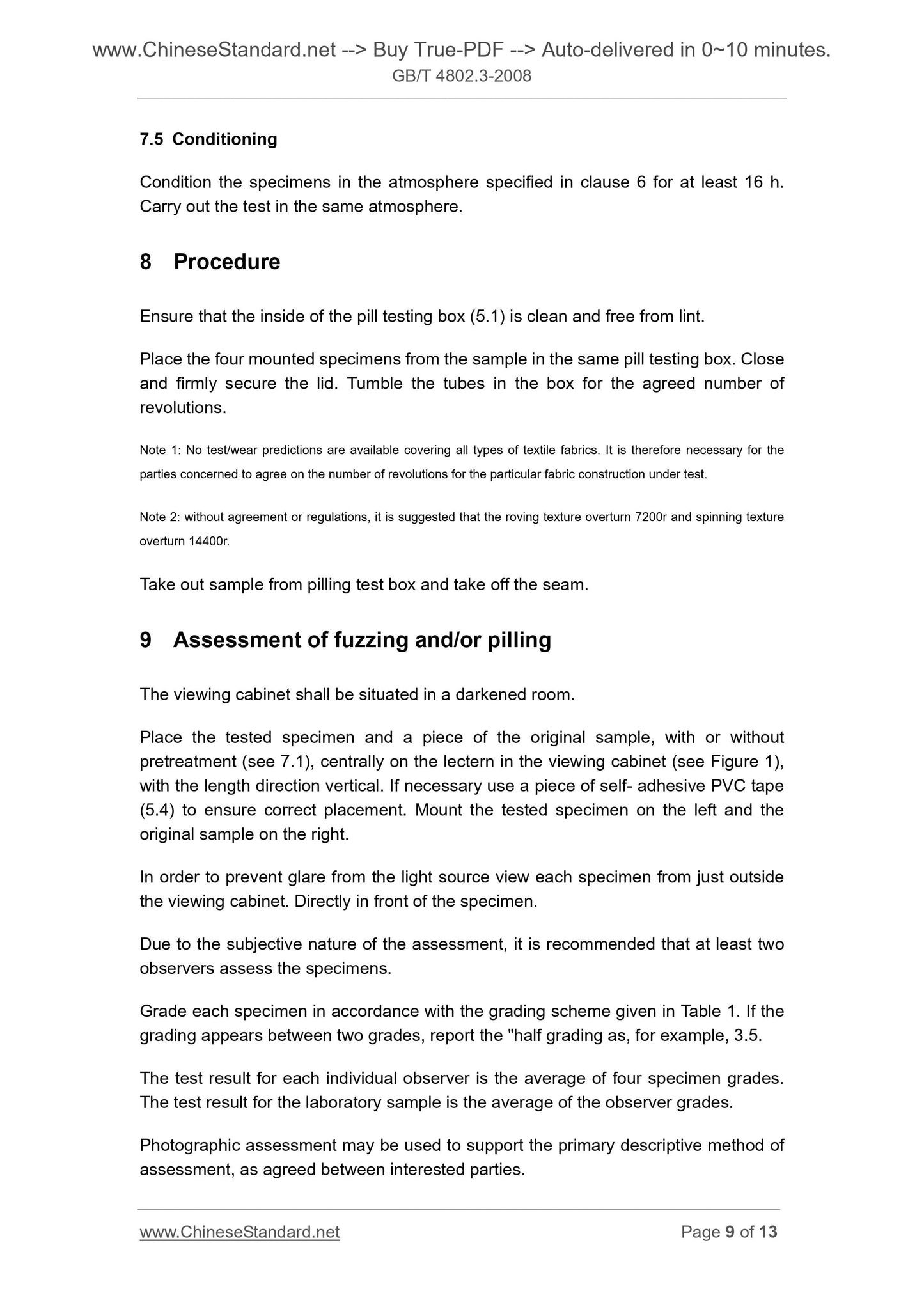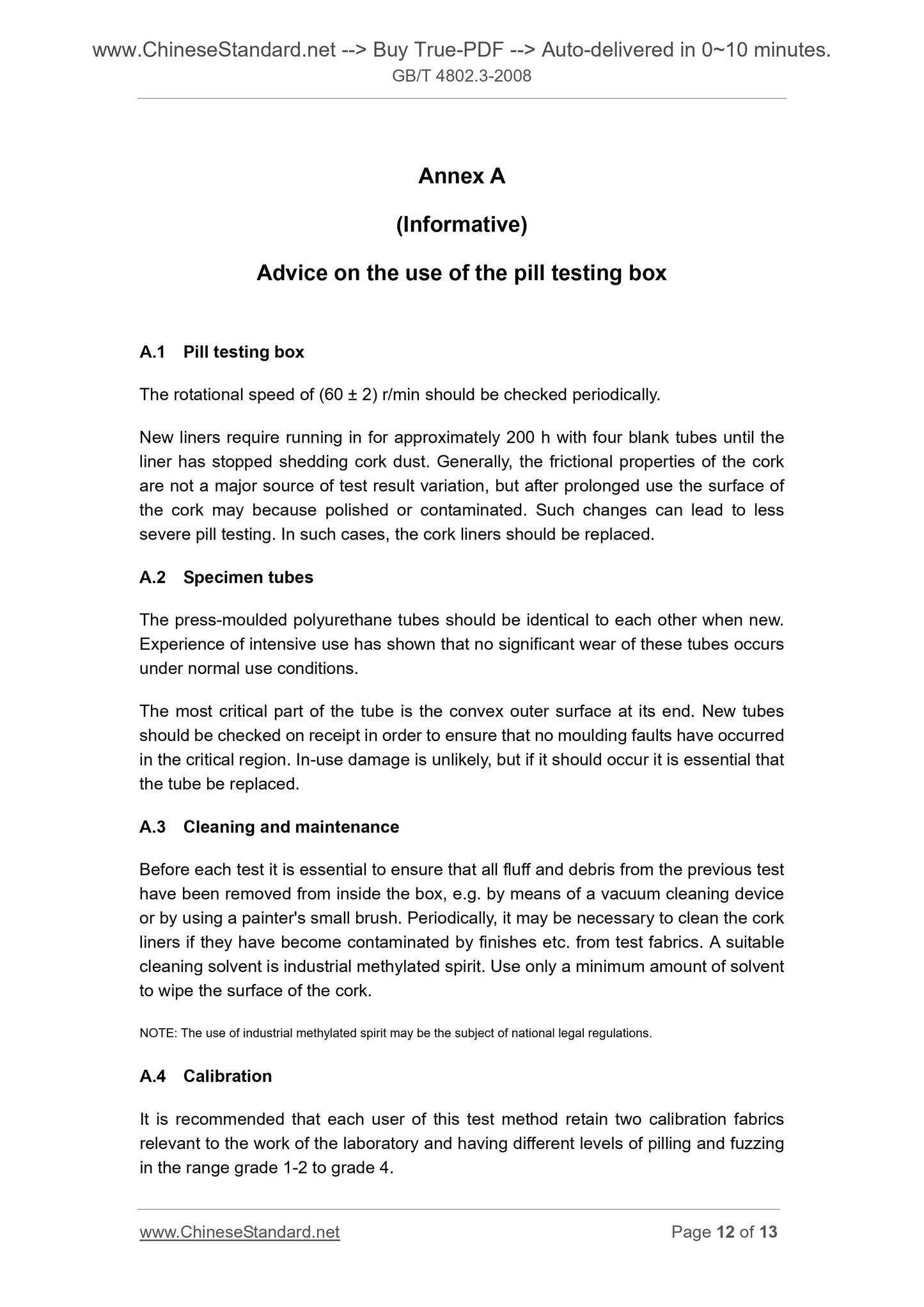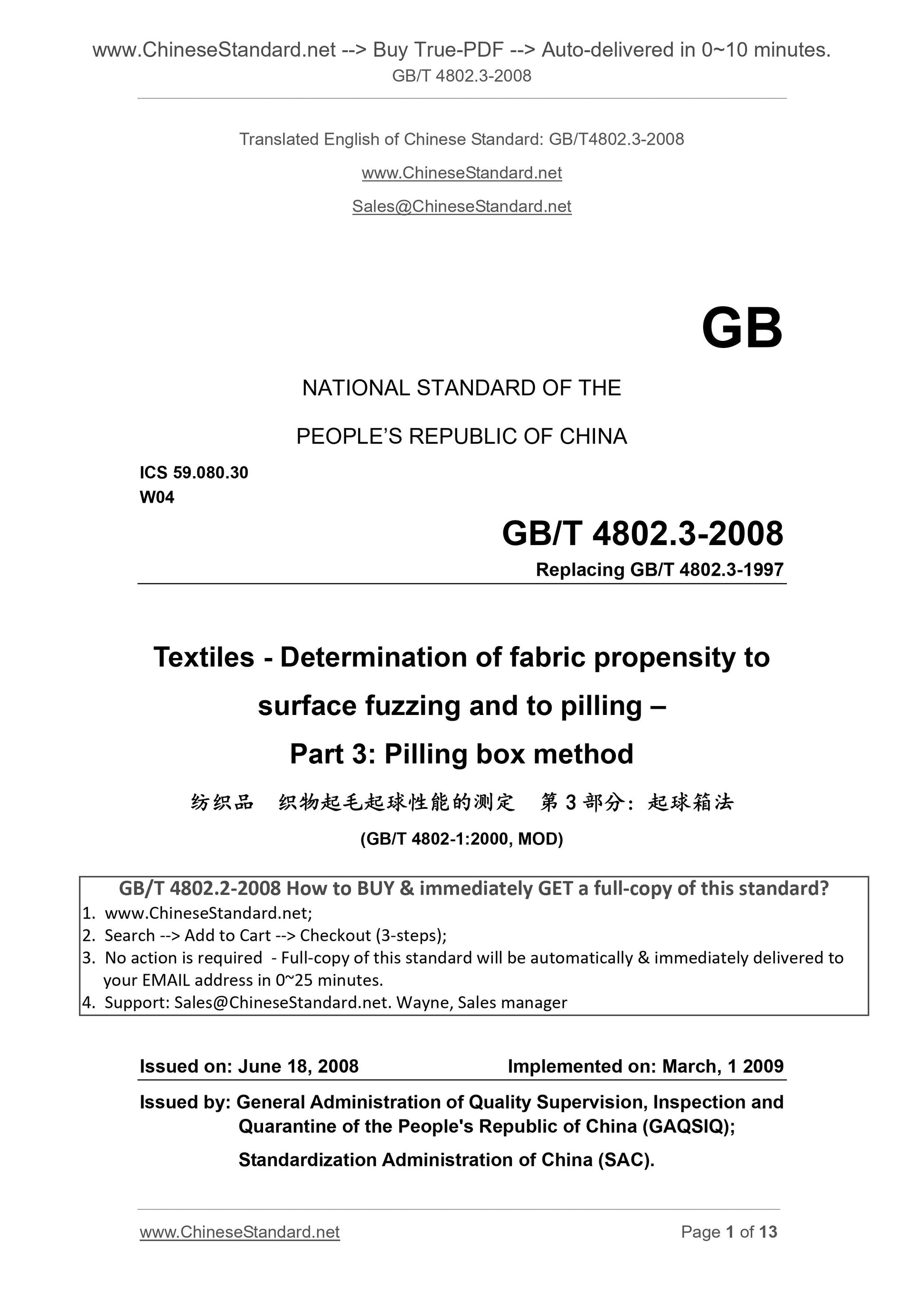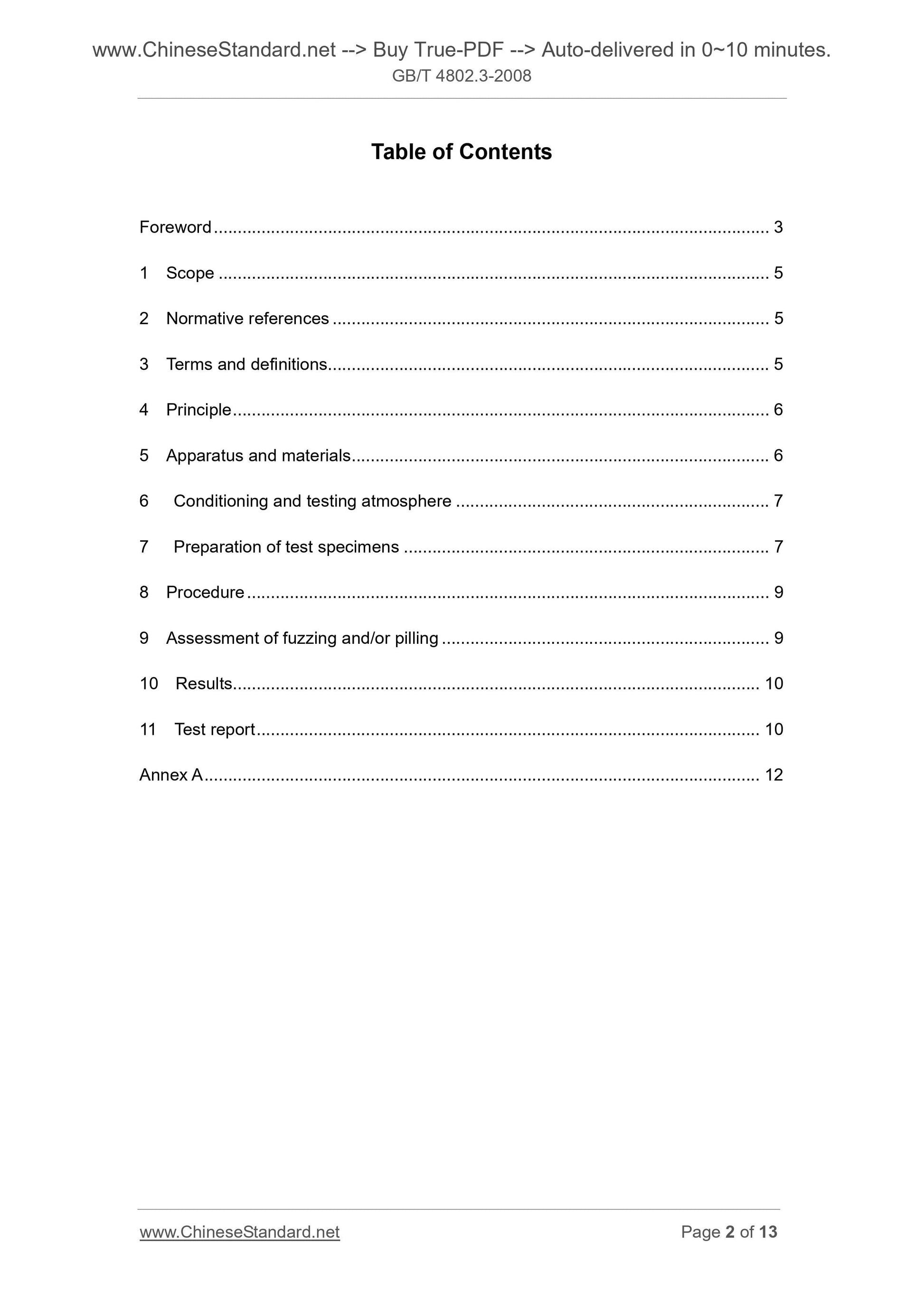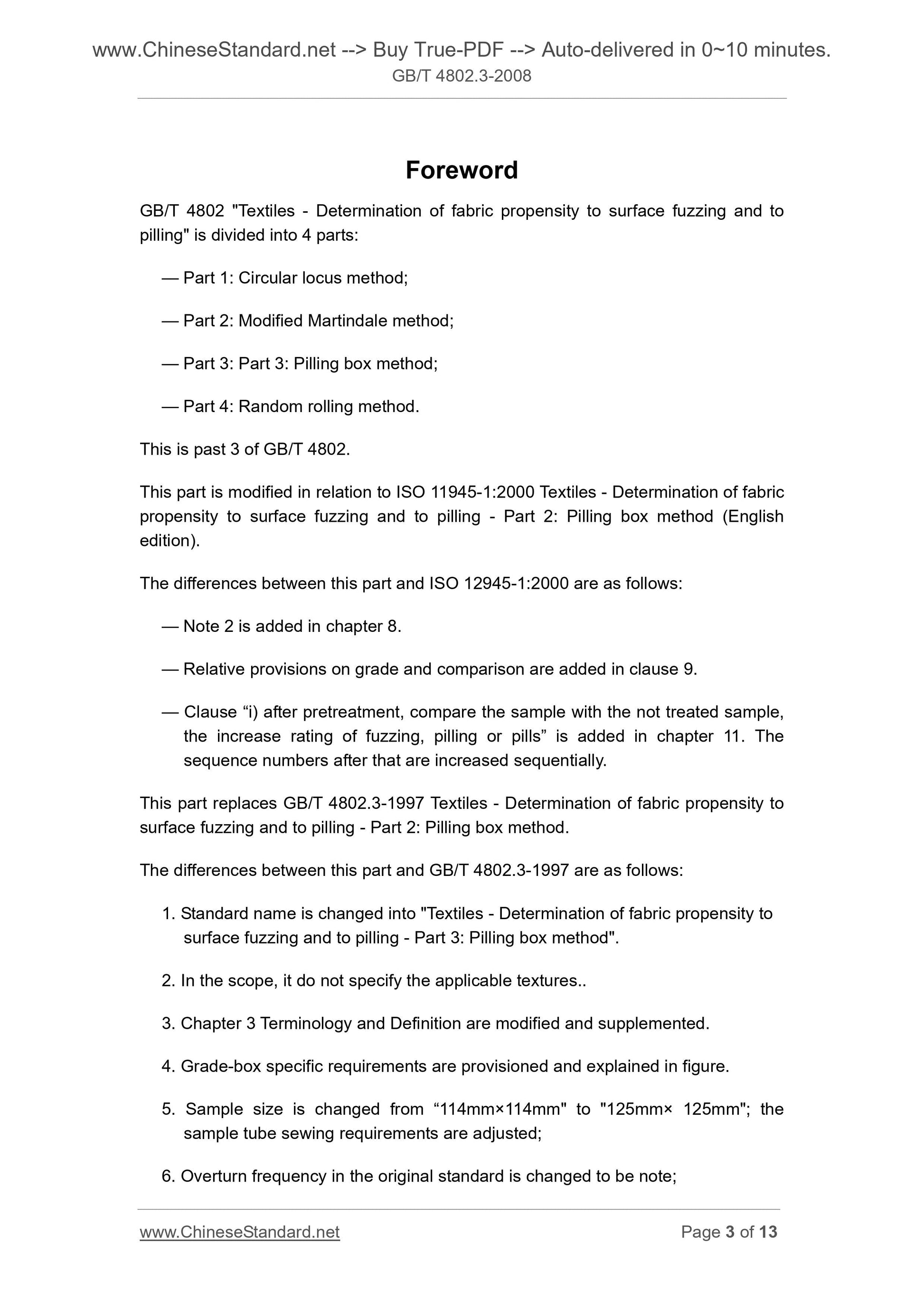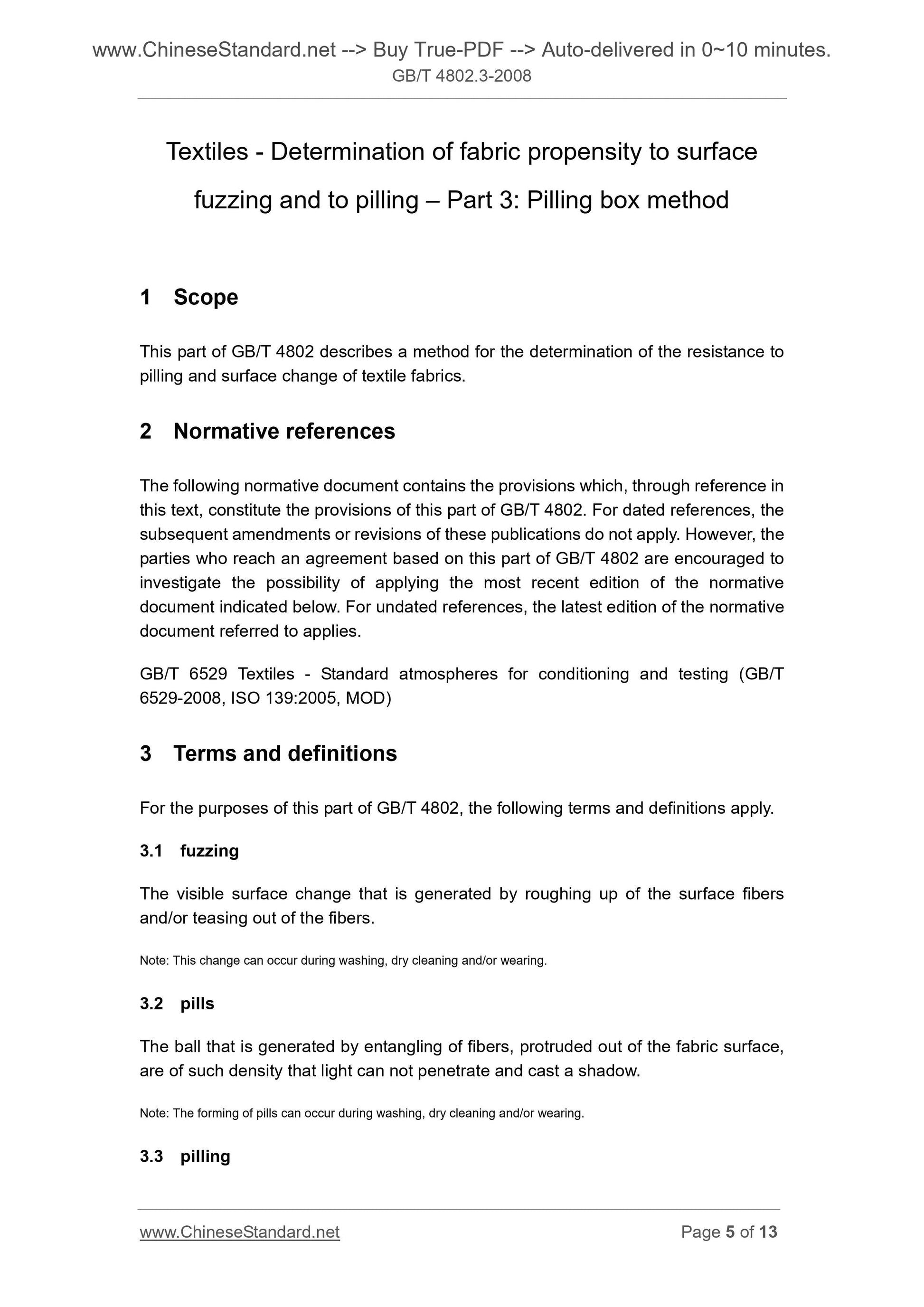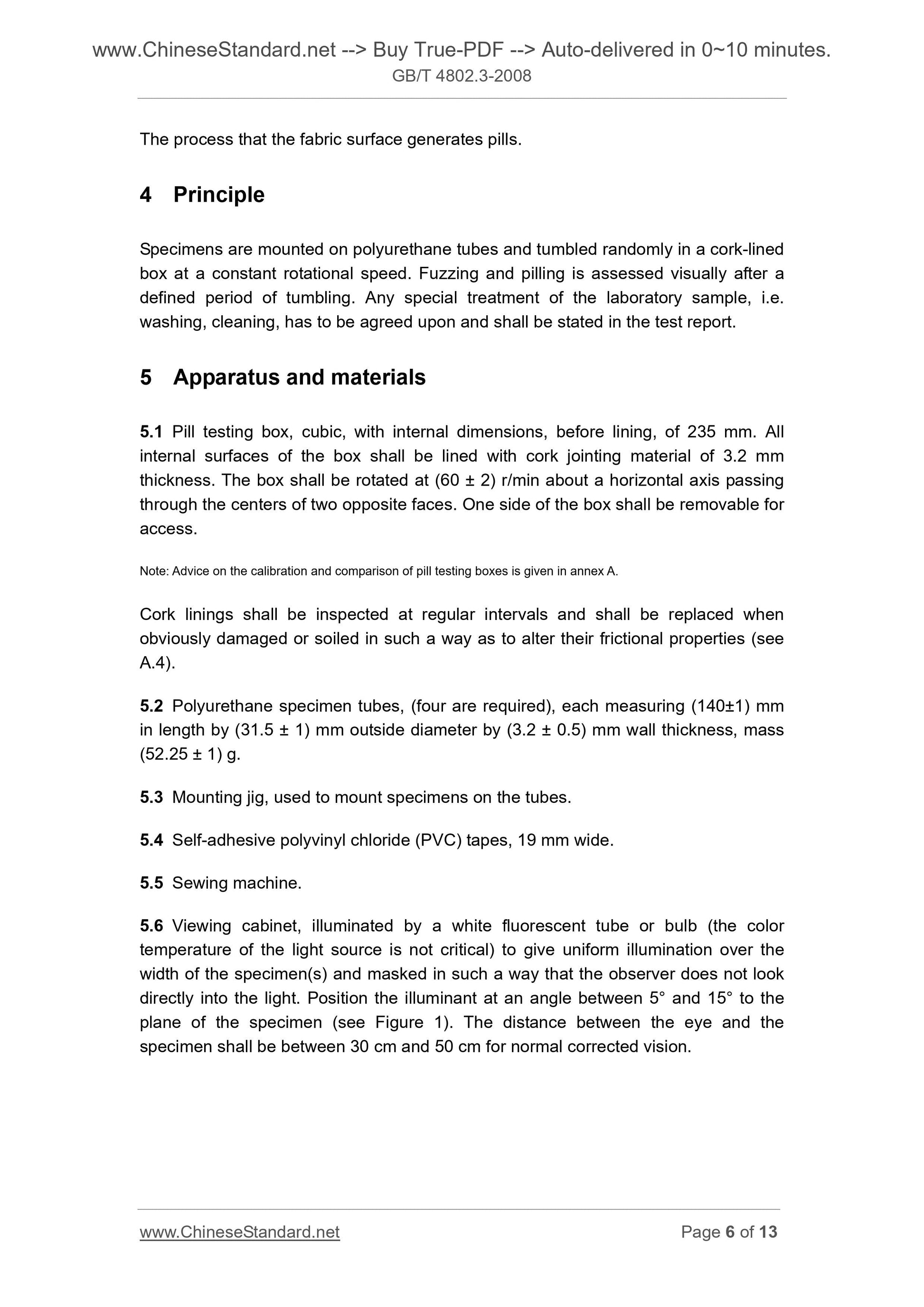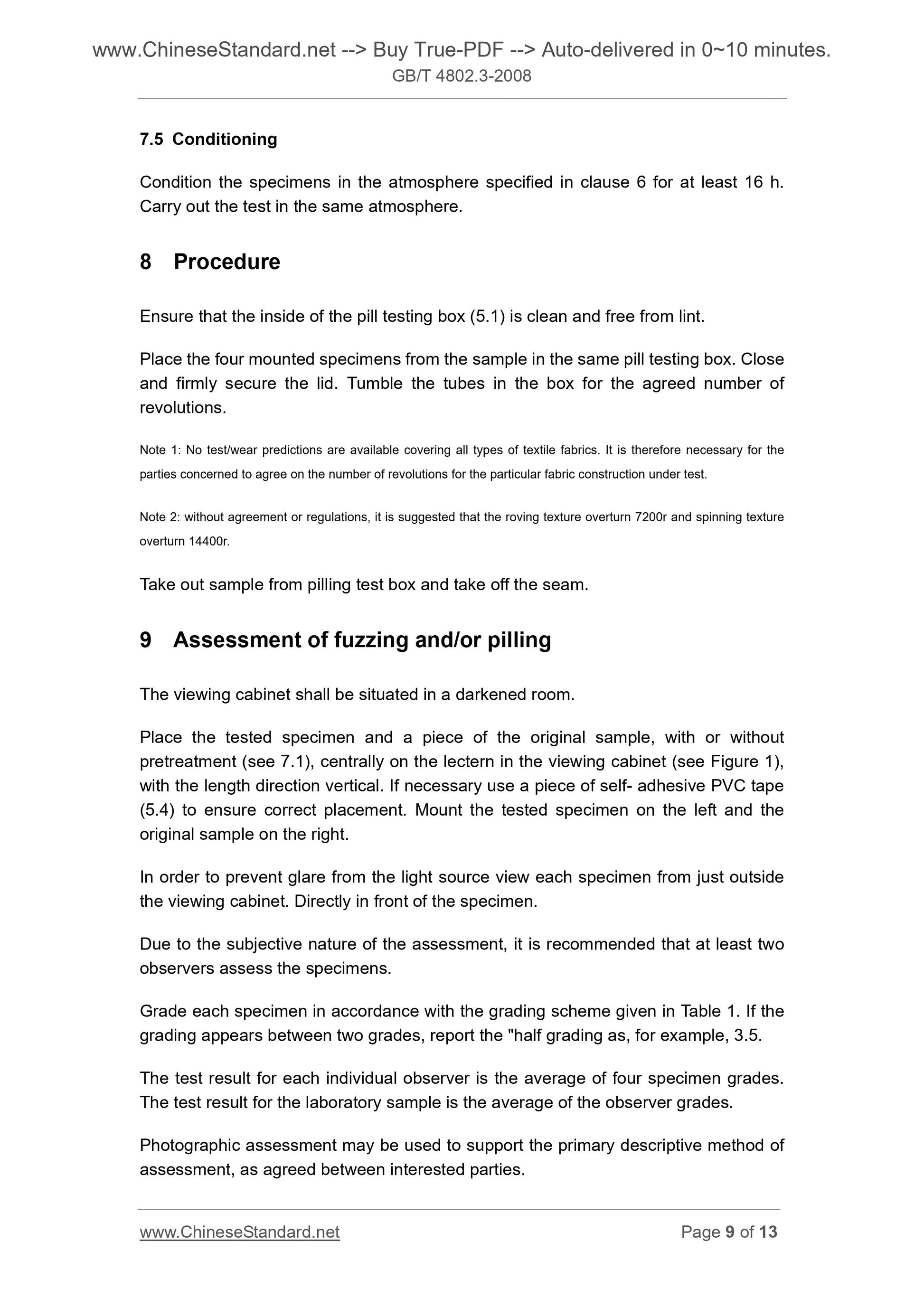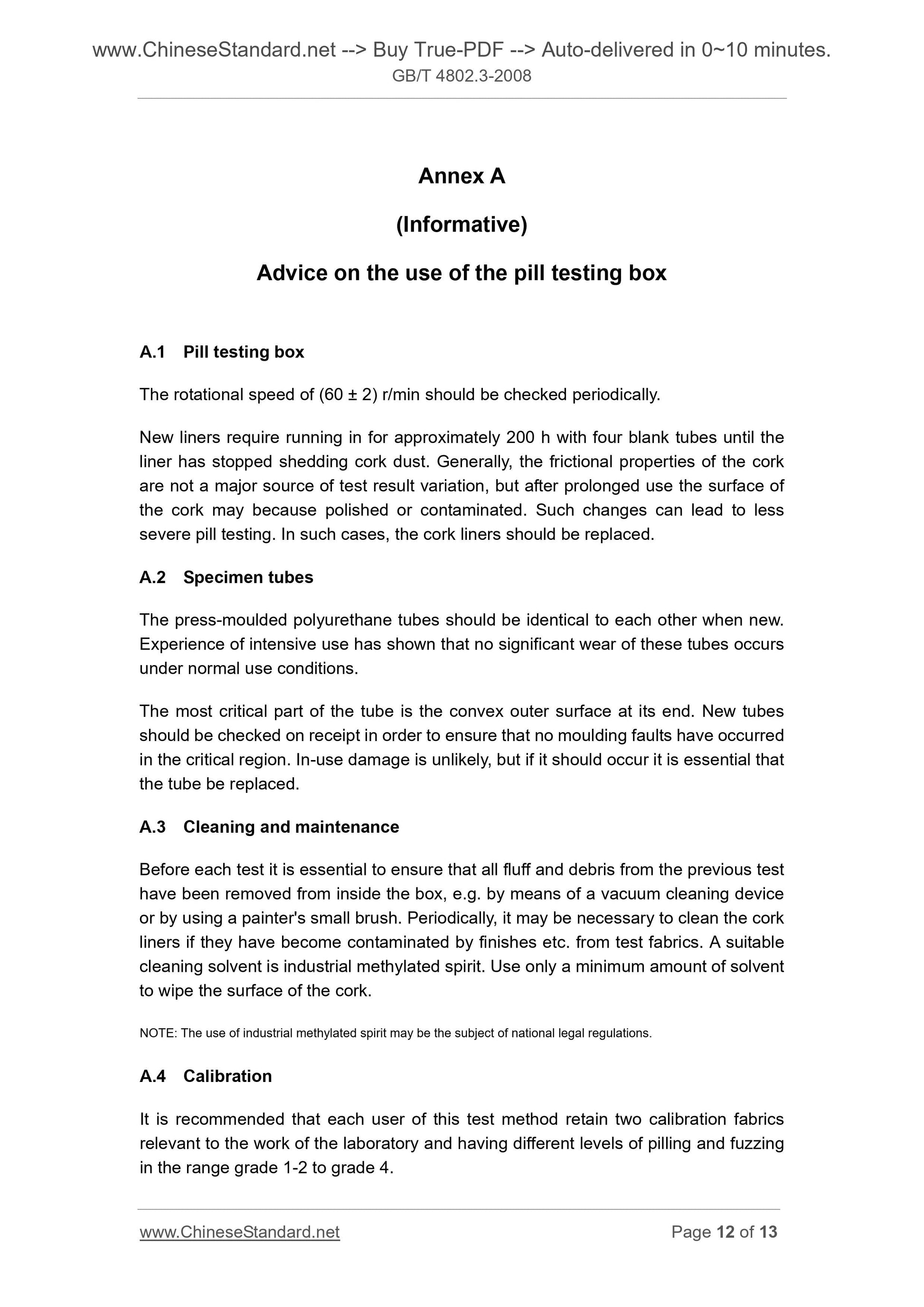1
/
of
7
www.ChineseStandard.us -- Field Test Asia Pte. Ltd.
GB/T 4802.3-2008 English PDF (GB/T4802.3-2008)
GB/T 4802.3-2008 English PDF (GB/T4802.3-2008)
Regular price
$70.00
Regular price
Sale price
$70.00
Unit price
/
per
Shipping calculated at checkout.
Couldn't load pickup availability
GB/T 4802.3-2008: Textiles -- Determination of fabric propensity to surface fuzzing and to pilling -- Part 3: Pilling box method
Delivery: 9 seconds. Download (and Email) true-PDF + Invoice.Get Quotation: Click GB/T 4802.3-2008 (Self-service in 1-minute)
Newer / historical versions: GB/T 4802.3-2008
Preview True-PDF
Scope
This part of GB/T 4802 describes a method for the determination of the resistance topilling and surface change of textile fabrics.
Basic Data
| Standard ID | GB/T 4802.3-2008 (GB/T4802.3-2008) |
| Description (Translated English) | Textiles -- Determination of fabric propensity to surface fuzzing and to pilling -- Part 3: Pilling box method |
| Sector / Industry | National Standard (Recommended) |
| Classification of Chinese Standard | W04 |
| Classification of International Standard | 59.080.30 |
| Word Count Estimation | 9,942 |
| Date of Issue | 2008-06-18 |
| Date of Implementation | 2009-03-01 |
| Older Standard (superseded by this standard) | GB/T 4802.3-1997 |
| Quoted Standard | GB/T 6529 |
| Adopted Standard | ISO 12945-1-2000, MOD |
| Regulation (derived from) | National Standard Approval Announcement 2008 No.10 (Total No.123) |
| Issuing agency(ies) | General Administration of Quality Supervision, Inspection and Quarantine of the People's Republic of China, Standardization Administration of the People's Republic of China |
| Summary | This standard specifies the method for determination of the ball box pilling fabric surface properties and surface changes adopted since. |
Share
